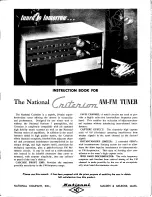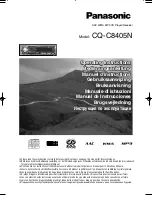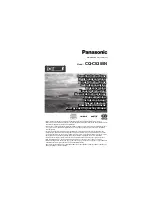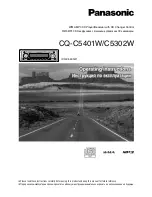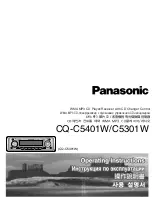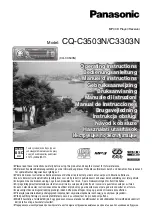
Page 47
RF65
Tel: +86-755-82973805 Fax: +86-755-82973550 E-mail: [email protected] http://www.hoperf.com
ADVANCED COMMUNICATIONS & SENSING
DATASHEET
5.5.3. Processing (without AES)
In Rx mode the packet handler extracts the user payload to the FIFO by performing the following operations:
Receiving the preamble and stripping it off
Detecting the Sync word and stripping it off
Optional DC-free decoding of data
Optionally checking the address byte
Optionally checking CRC and reflecting the result on
CrcOk.
Only the payload (including optional address and length fields) is made available in the FIFO.
When the Rx mode is enabled the demodulator receives the preamble followed by the detection of sync word. If fixed
length packet format is enabled then the number of bytes received as the payload is given by the
PayloadLength
parameter.
In variable length mode the first byte received after the sync word is interpreted as the length of the received packet. The
internal length counter is initialized to this received length. The
PayloadLength
register is set to a value which is greater
than the maximum expected length of the received packet. If the received length is greater than the maximum length stored
in
PayloadLength
register the packet is discarded otherwise the complete packet is received.
If the address check is enabled then the second byte received in case of variable length and first byte in case of fixed
length is the address byte. If the address matches to the one in the
NodeAddress
field, reception of the data continues
otherwise it's stopped. The CRC check is performed if
CrcOn
= 1 and the result is available in
CrcOk
indicating that the
CRC was successful. An interrupt (
PayloadReady
) is also generated on DIO0 as soon as the payload is available in the
FIFO. The payload available in the FIFO can also be read in Sleep/Standby mode.
If the CRC fails the
PayloadReady
interrupt is not generated and the FIFO is cleared. This function can be overridden by
setting
CrcAutoClearOff
= 1, forcing the availability of
PayloadReady
interrupt and the payload in the FIFO even if the CRC
fails.
5.5.4. AES
AES is the symmetric-key block cipher that provides the cryptographic capabilities to the receiver. The system proposed
can work with 128-bit long fixed keys. The fixed key is stored in a 16-byte write only user configuration register, which
retains its value in Sleep mode.
As shown in Figure 28 and Figure 29 above the message part of the Packet can be decrypted with the cipher 128- cipher
key stored in the configuration registers.
5.5.4.1. Processing
1. The data received is stored in the FIFO, The address, CRC interrupts are generated as usual because these
parameters were not encrypted.
2. Once the complete packet has been received. The data is read from the FIFO, decrypted and written back to FIFO.
The
PayloadReady
interrupt is issued once the decrypted data is ready in the FIFO for reading via the SPI interface.
The AES decryption cannot be used on the fly i.e. while receiving data. Thus when AES decryption is enabled, the FIFO
acts as a simple buffer. The decryption is initiated only once the complete packet has been received in the buffer.
The decryption process takes approximately 7.0 us per 16-byte block. Thus for a maximum of 4 blocks (i.e. 64 bytes) it can
take up to 28 us for completing the cryptographic operations.































